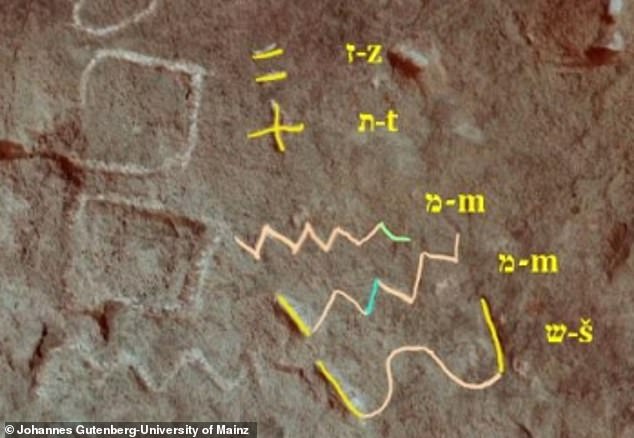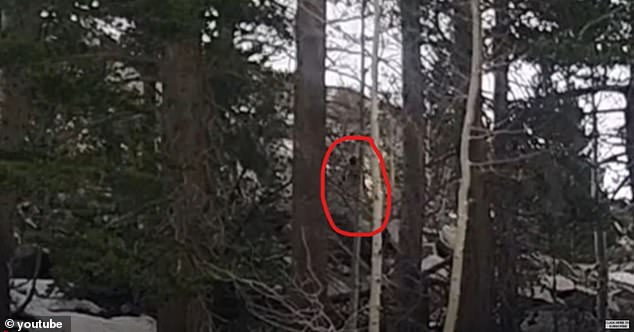
Ancient Egyptian Mine Inscription Linked to Moses May Corroborate Biblical Narrative
Ancient Inscription Sparks Debate: Could This Prove the Exodus Story?
A 3,800-year-old Proto-Sinaitic inscription discovered in Egypt’s Sinai Peninsula is fueling claims of a biblical breakthrough. Independent researcher Michael Bar-Ron suggests markings in a turquoise mine at Serabit el-Khadim could read “zot m’Moshe” (Hebrew for “This is from Moses”), potentially linking the site to the legendary figure credited with leading the Israelites out of slavery. The inscriptions, found among over two dozen early alphabetic texts, date to Egypt’s 12th Dynasty (c. 1800 BCE) and were carved by Semitic-speaking laborers.
[Image suggestion: View of the Serabit el-Khadim mining area with ancient carvings visible on rocky walls.]
Bar-Ron analyzed high-resolution images and 3D scans over eight years, grouping the inscriptions into five categories, including dedications to deities and accounts of labor. While most scholars caution that Proto-Sinaitic script remains poorly understood, Bar-Ron points to recurring references to “El”—a name linked to early Hebrew worship—and evidence of deliberate defacement of Egyptian goddess Hathor’s symbols as indicators of cultural conflict. “This is ground zero for a religious struggle,” he said, noting how carvings honoring the Canaanite goddess Baʿalat were later altered by scribes venerating El.
The debate centers on whether these inscriptions reflect a proto-Israelite presence. Nearby findings, such as a burned temple to Baʿalat and a stele mentioning an “Asiatic” high official, hint at tensions between Semitic workers and Egyptian rulers. Some speculate the workers’ eventual departure aligns with Exodus narratives of liberation.
[Image suggestion: Close-up of an inscription showing scratches over hieroglyphic symbols, indicating possible religious revision.]
Skepticism and Significance
Mainstream Egyptologists urge caution. Dr. Thomas Schneider of the University of British Columbia dismissed Bar-Ron’s claims as “misleading,” emphasizing the difficulty of interpreting Proto-Sinaitic characters. However, Dr. Pieter van der Veen, Bar-Ron’s advisor, endorsed the “Moses” reading, calling it credible.
The inscriptions coincide with Pharaoh Amenemhat III’s reign—a ruler often linked to Exodus due to his harsh labor policies and monumental projects. References to slavery and overseers in the carvings, alongside warnings about a “Gate of the Accursed One” (possibly a pharaonic authority), hint at resistance. Bar-Ron also highlights a second potential “Moshe” inscription nearby, though its context remains unclear.
[Image suggestion: 3D scan of an ancient inscription with highlighted Proto-Sinaitic characters.]
Biblical Connections
The site’s Semitic ties extend to figures like Joseph, the biblical advisor to Pharaoh. A seal belonging to an “Asiatic” official and the Stele of Reniseneb suggest Semitic individuals held influential roles, aligning with Genesis’ account of Joseph’s rise to power. Bar-Ron speculates that conflicts over idol worship at the mines could mirror later biblical condemnations of pagan practices.
While the study isn’t peer-reviewed, its implications resonate with those seeking archaeological proof of Exodus. Bar-Ron insists his approach is cautious: “The only way to do serious work is to struggle to find alternative solutions,” he told Patterns of Evidence.
[Image suggestion: Artist’s depiction of Semitic laborers carving inscriptions in an ancient Egyptian mine.]
Whether the inscriptions prove Moses’ existence or reflect early Hebrew-speaking communities, they underscore the complex interplay of culture, religion, and labor in ancient Egypt—a story still being unearthed.


